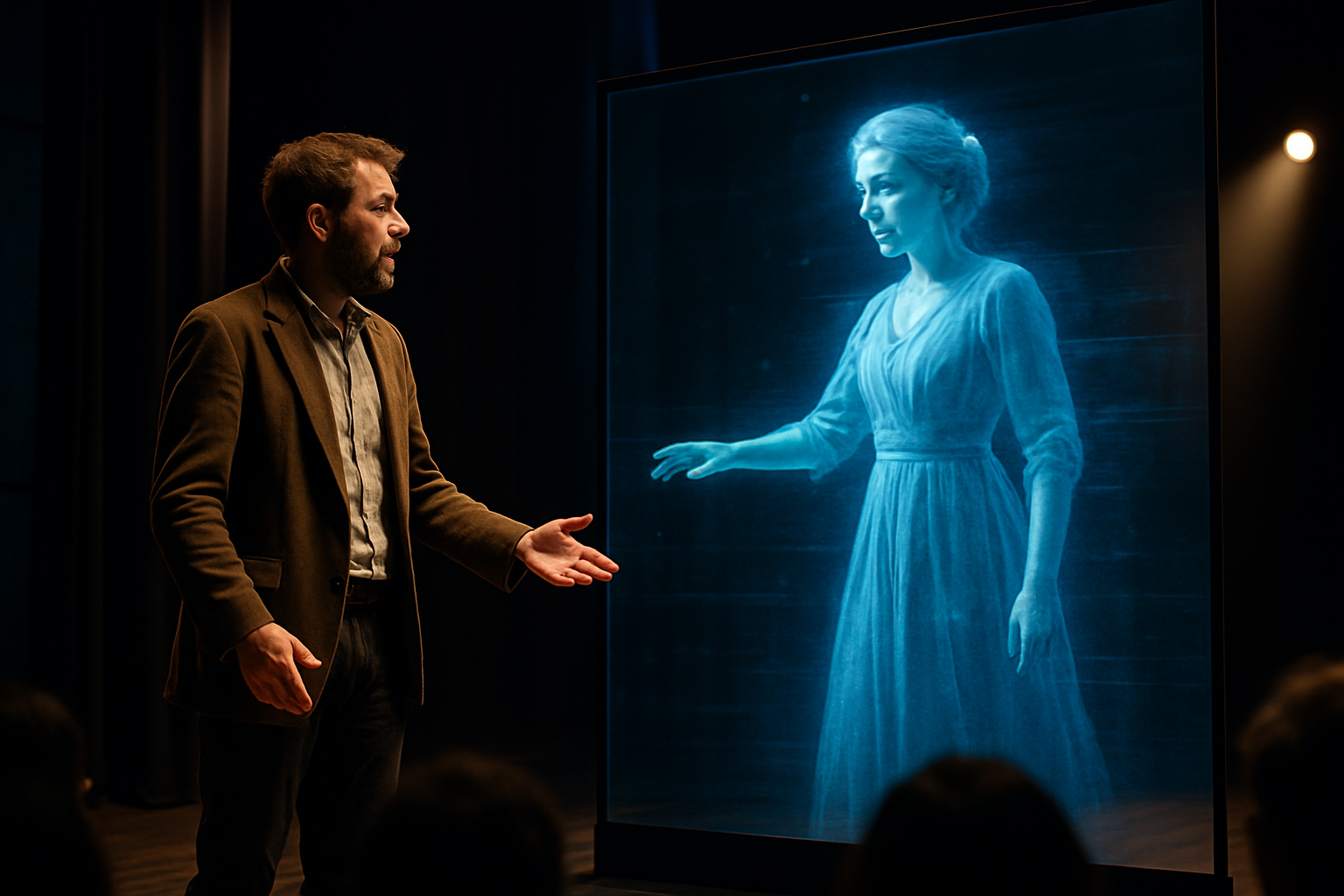Holographic Theater: The Next Stage of Live Performance
In the ever-evolving landscape of performing arts, a groundbreaking revolution is taking center stage: holographic theater. This cutting-edge fusion of traditional stagecraft and advanced technology promises to redefine the boundaries of live entertainment. As audiences crave increasingly immersive experiences, holographic theater emerges as a captivating solution, blending the tangible presence of live actors with the limitless possibilities of digital projection. This article delves into the emergence of holographic theater, exploring its potential to transform the theatrical landscape and captivate audiences in ways previously unimaginable.

Breaking the Fourth Wall: How Holography Works in Theater
At its core, holographic theater utilizes a combination of high-resolution projectors, specialized screens, and sophisticated software to create three-dimensional images that appear to occupy physical space. Unlike traditional projections, holographic images can be viewed from multiple angles, creating an illusion of depth and presence. This technology allows performers to interact with virtual elements seamlessly, blurring the lines between the physical and digital realms.
Reimagining Classic Works Through a Holographic Lens
One of the most exciting applications of holographic theater is the reimagining of classic plays and operas. Productions like Shakespeare’s The Tempest have been given new life through holographic staging, with Prospero’s magical island rendered in stunning 3D detail. Similarly, operas such as Wagner’s Ring Cycle have benefited from holographic set designs that transport audiences to mythical realms with unprecedented realism.
Collaborative Performances Across Time and Space
Holographic theater opens up possibilities for collaborative performances that defy the constraints of time and space. Imagine a duet between a living singer and a holographic projection of a long-deceased icon, or a dance performance featuring artists from different continents sharing the same virtual stage. These scenarios are no longer confined to the realm of imagination but are becoming tangible realities in the world of holographic theater.
The Technical Challenges and Innovations
While the potential of holographic theater is immense, it is not without its challenges. Creating convincing holographic projections requires cutting-edge hardware and software, as well as skilled technicians who can seamlessly integrate these elements into live performances. Issues such as latency, image quality, and the need for specialized viewing conditions must be addressed to ensure a truly immersive experience for audiences.
The Future of Holographic Theater: Beyond the Stage
As holographic technology continues to advance, its applications in theater are likely to expand beyond traditional stage settings. Site-specific performances could incorporate holographic elements to transform public spaces into impromptu theaters. Additionally, the integration of augmented reality headsets could allow individual audience members to experience personalized holographic overlays during performances, further blurring the line between reality and imagination.
Ethical Considerations and Artistic Integrity
The rise of holographic theater also raises important questions about artistic integrity and the nature of live performance. How do we balance the use of technology with the raw human element that makes theater unique? What are the ethical implications of digitally recreating deceased performers? These are just some of the complex issues that the theater community must grapple with as holographic technology becomes more prevalent.
Conclusion: A New Dimension of Theatrical Experience
Holographic theater stands at the forefront of a new era in live performance, offering unprecedented opportunities for creativity and audience engagement. As this technology continues to evolve, it has the potential to revolutionize not only how we create and consume theater but also how we perceive the boundaries between reality and illusion. While challenges remain, the future of holographic theater looks bright, promising to deliver experiences that will captivate, inspire, and push the boundaries of human imagination.





